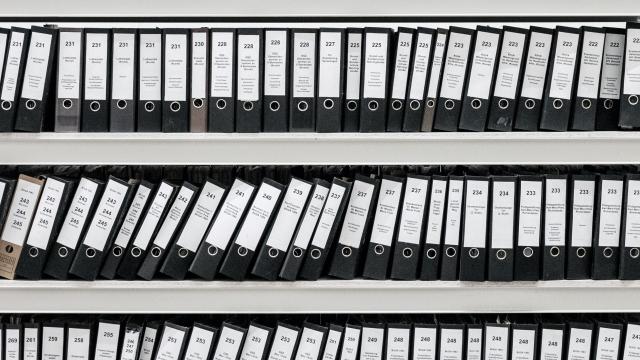Here’s another one of those small things you can knock out of the way before the year’s end: Organise your financial documents.
That doesn’t necessarily mean colour-coded folders and an alphabetized ordering system, but it does mean making sure you have all of the important information you need about your various financial accounts at the ready.
1. Write Down All of Your Account Information
This step will likely take you the longest. Write down all of your financial accounts, as well as log in information, balances and beneficiaries, suggests Mint. This can be done with pen and paper, on an Excel spreadsheet, via Google docs or with some other app. Personally, I keep mine in a password-protected folder in my note-taking app.
The point is to have it easily-accessible, but remember, it also needs to be secure. If you use something like Google Docs, make sure your password is secure (are you using a manager yet?).
Here are some examples of accounts:
-
Checking and savings accounts
-
Credit cards
-
401(k)s and IRAs
-
Brokerage accounts
-
Student loan accounts
-
Car loan
-
Mortgage
-
Medical debt
-
Auto insurance
-
Home/renter’s insurance
-
Life insurance
-
Taxes
“For debt-related accounts, write down the interest rate, monthly payment, the total balance remaining, loan provider, loan term and any other relevant details,” suggests Mint.
If you don’t have beneficiaries listed for your accounts, now’s the time to add one. If you’re the caretaker of an older parent, for example, here are some questions to ask them to make sure you have all the information you need.
[referenced url=”https://www.lifehacker.com.au/2018/12/knock-one-thing-off-your-financial-to-do-list-before-2019/” thumb=”https://i.kinja-img.com/gawker-media/image/upload/t_ku-large/w2ajdt03oa0dtdmummth.jpg” title=”Knock One Thing Off Your Financial To-Do List Before 2019″ excerpt=”If you’re reflecting on 2018 and gearing up for the new year, setting a resolution or two might be your focus right now. But before you start thinking about how to improve your life starting in January, ask yourself: What small things can you get out of the way now?”]
2. Check Your Credit Report
Ideally you’re checking your free credit report every four months. Now, check it to see if there are any credit accounts that you’re missing above (and as always, check for mistakes or red flags).
3. Flag Financial Emails
Use key words for your bank, 401(k) provider, etc., to check your inbox for financial emails. Then, flag them with a specific colour tag or bundle them together so that all of the information is in one place.
4. Organise Your Financial Paperwork
Now that you’ve handled your online accounts, it’s time to go analogue. If you have a stack of financial paperwork you keep promising to address at some point, take 10 minutes to organise it.
To start, consider whether you actually need a paper copy of that months-old cable bill. “Take time to read through documents to figure out what they mean,” suggests Bankrate. “Then ask yourself, ‘What’s the worst thing that can happen if I throw it out? Can I get another copy? Is it something that I’ll need later on?’”
Chances are, it’s not. Keep only the most recent copies of things (like your bank balances or auto insurance policy) and shred the old ones. One exception: Tax returns. Keep these files for three to seven years, depending on your situation. Here’s a guide to how long to keep other types of paper documents.
Then, consider moving your financial filing system out of the basement and into a more central location, suggests Bankrate. If the paperwork is conveniently located near your computer, for example, you’re more likely to keep it organised. Keep like with like: Tax returns with tax returns, mortgage info with mortgage info, etc. For examples of different filing systems, check out this article.
Finally, put a semi-regular reminder in your calendar to stay on top of your paperwork. Now that you’ve done most of the legwork, the upkeep should be easy.

Comments